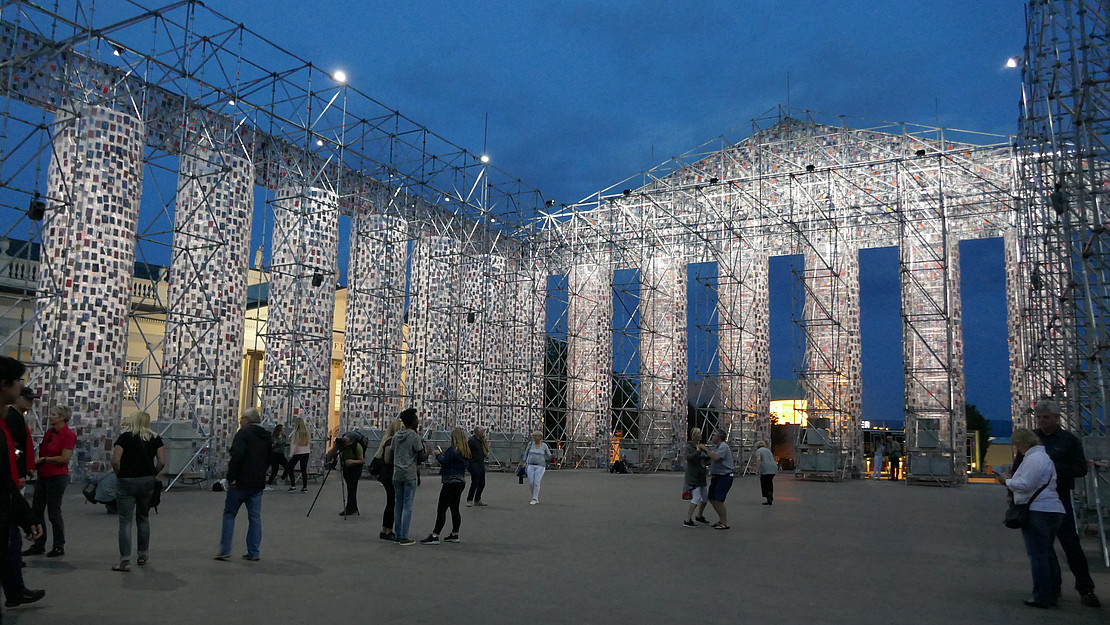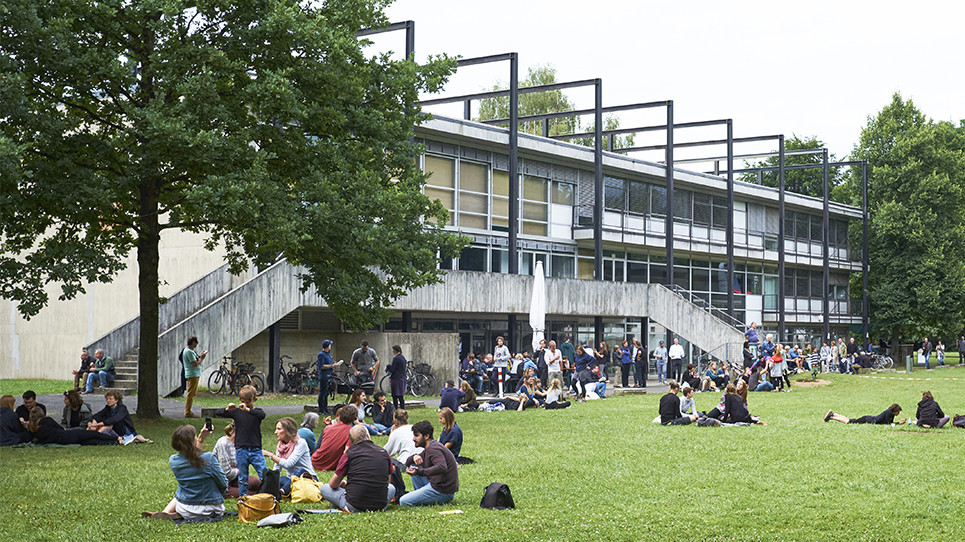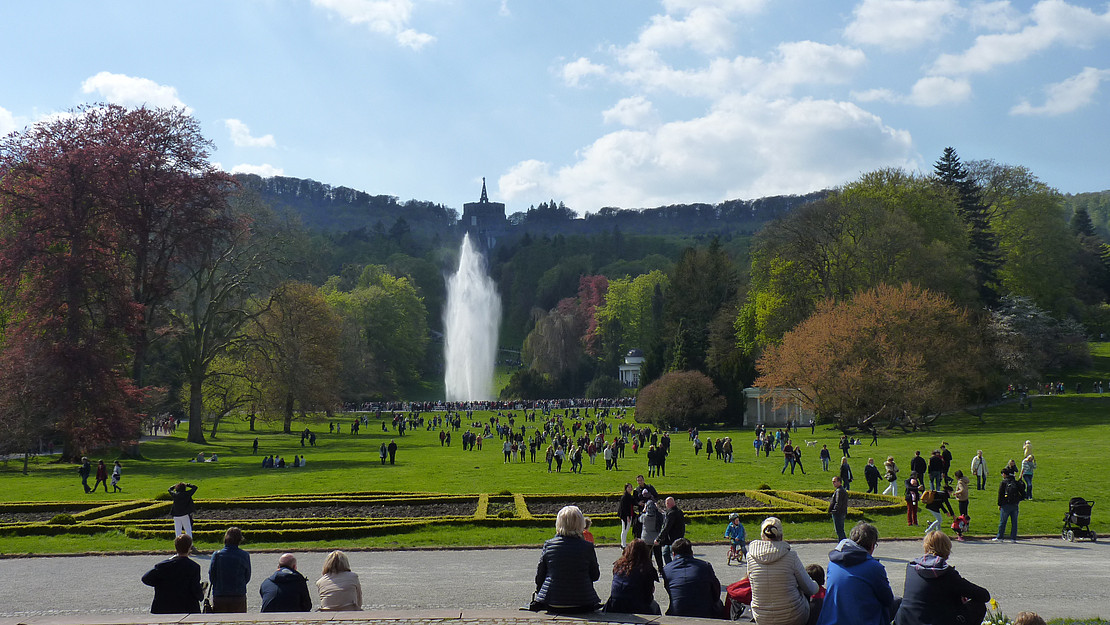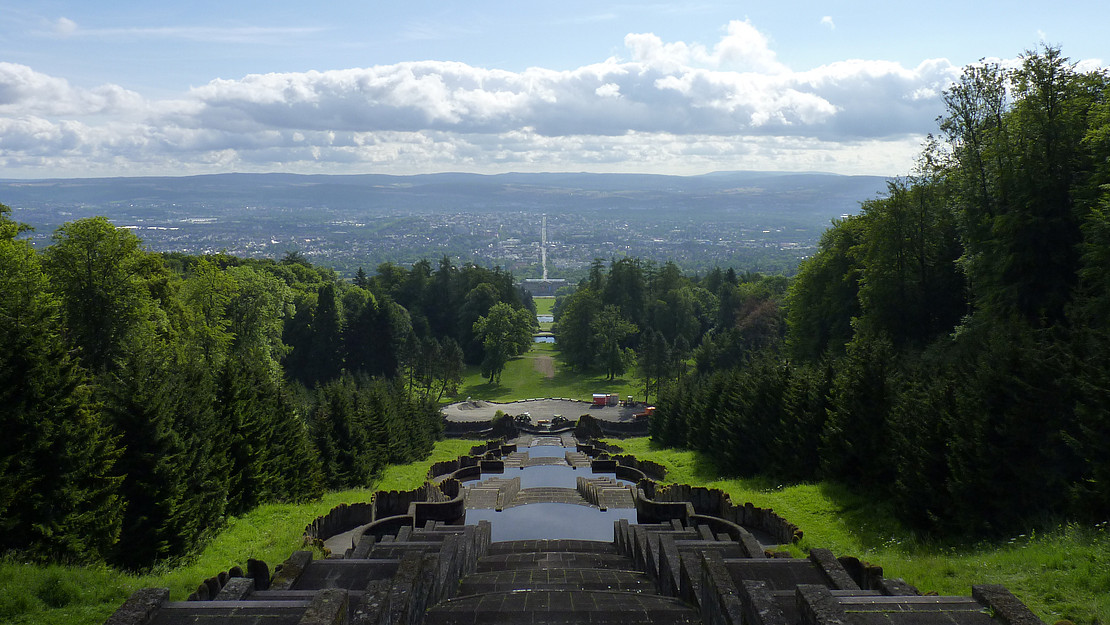Study and art location Kassel
The content on this page was translated automatically.
The study location Kassel is not only characterized by a thematically broadly diversified art science teaching. With the third largest museum density in Germany, Kassel also enables students to study art history in a multifaceted way. In addition to renowned collections (largest Rembrandt collection in Germany) and exhibition halls, numerous other institutions such as libraries, archives, institutes are available.

documenta - experience contemporary art up close and personal
Studying art history in Kassel is characterized by its connection to the documenta, which every five years turns the city into the venue for one of the world's most famous major exhibitions of contemporary art. This provides students of art history with special insights that can be deepened in corresponding courses and research projects. Between the 5-year exhibitions, you can also discover the many, sometimes hidden, outdoor documenta artworks in Kassel's urban environment.
The documenta archive has an impressive collection of text and image sources on contemporary art. Kassel is therefore predestined for the study of more current positions from the end of the 20th century. In addition, the internationally renowned Museum Fridericianum, which was founded in 1779 as one of the first public museums on the European mainland and is now an art gallery, presents a broad spectrum of contemporary art.
Another attraction is the newly founded documenta Institute, where specific documenta professorships and their employees conduct research into processes of artistic and curatorial production, social issues and the reception of documenta. Students can actively participate in this.

A university course in a university of the arts - Kassel a special place to study
Centrally yet quietly located, between Frankfurter Straße with its numerous stores, galleries, bars and restaurants and the extensive Karlsaue park, are the buildings of the Kunsthochschule Kassel, which is also home to the art studies program.
Although the beginnings of the Kunsthochschule Kassel can be traced back to the late 18th century, it has only existed in its current form, as a semi-autonomous institute of the University of Kassel, since the early 1970s. The direct proximity of the study programs Fine Arts, Product Design, Visual Communication, Art Education and Art Science enables a direct exchange by bringing together scientific, artistic, design as well as art educational perspectives. This is reflected not only in joint, interdisciplinary projects, but also through the opportunity to visit one of the total of 14 study workshops and thus directly experience artistic processes as an art historian.
In just a few minutes you can reach the trains of the public transport network, which means that Bergpark Wilhelmshöhe or the numerous museums, for example, are easily and quickly accessible. It is also only a few minutes by bike through the Karlsaue and along the Fulda to Holländischer Platz, where the main campus of the University of Kassel is located.
Museum diversity - All eras in one city
The broad spectrum of art historical studies that characterizes art studies in Kassel can also be experienced in the local museum landscape. Thus, key works of all art epochs from antiquity to the present can be viewed and studied in numerous exhibition houses and collections, which are located close together, so to speak. The Museumslandschaft Hessen-Kassel alone, with the Collection of Classical Antiquities, the Old Masters Picture Gallery, the Collection of Prints and Drawings, and the Neue Galerie, offers all the possibilities for a comprehensive study of art history in front of originals. These facilities are supplemented by exhibition houses such as the documenta Hall or the Fridericianum, which offer insights into current international art in temporary exhibitions. In Kassel, ancient sculpture and vase painting, medieval panel painting, 17th-century Dutch painting, 18th-, 19th- and 20th-century art, and contemporary object art and installation are all found in close proximity to one another. Institutions such as the Museum of Sepulchral Culture (objects of the cult of the dead and burial) or the GRIMMWELT also enrich the holdings of fine and free art with special collections of arts and crafts and cultural history.


Kassel - a city with history and the UNESCO World Heritage Site Bergpark Wilhelmshöhe
Kassel is a very rich city from a cultural and historical point of view, despite the heavy destruction during World War II: In addition to the post-war modernist architecture that characterizes the city center, Kassel has a well-preserved Wilhelminian quarter in the west and numerous parks that date back to the 17th and 18th centuries. Together with the complementary project of Joseph Beuys' project "7000 oaks - city forestation instead of city administration" on the occasion of documenta 7, Kassel today becomes the second greenest city in Germany. From the baroque park of Karlsaue with orangery east of the city center, the axis of Wilhelmshöher Allee leads to Kassel's biggest attraction in the west - Bergpark Wilhelmshöhe. Since 2013, the 560-hectare landscape garden with its impressive water features has held the title of UNESCO World Heritage Site. Between the Hercules Building - Kassel's landmark - and Wilhelmshöhe Palace, the ornate water features stretch over cascading staircases and romantic rock formations. The complex is based on a 300-year-old engineering feat that still manages without the use of pumps. Going back to the centuries-long cultural commitment of the Landgraves of Kassel, a rich world of historic buildings, horticultural installations and art treasures has formed around Bergpark Wilhelmshöhe, which is a valuable source of practical and research-oriented study for prospective art scholars.
"Studying in the middle of Germany"
Kassel has an advantageous geographical location. Located in the center of Germany, you can reach cities such as Berlin, Hamburg, Frankfurt a. M. or Munich quickly and with good connections. Regular excursions to museums, exhibitions or fairs are offered by the Department of Art Studies. Day trips for study purposes can be made easily and without much effort on one's own. With the semester ticket, the University of Kassel offers the possibility to use bus and train in Northern Hesse around the clock free of charge. The cities of Göttingen, Marburg or Fulda with their important art treasures are also connected. At the universities in Marburg and Göttingen, students can also attend seminars and courses, which can complement a broader study profile. Students thus benefit from Kassel's central location and can network ideally from here.